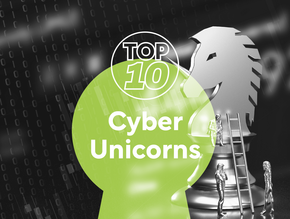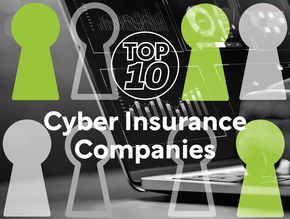
With cyber attacks continuing to rise, understanding the threat landscape has never been more important. From sophisticated state-sponsored attacks to cunning social engineering tactics, bad actors are using increasingly devious methods to exploit security vulnerabilities, creating real dangers for organisations globally.
Posing risks from financial loss to reputational harm, Cyber Magazine explores 10 of the most dangerous cybersecurity threats, and the risks they pose to businesses globally.
10. State-sponsored threats
State-sponsored actors pose a serious threat to businesses that operate in a range of critical sectors, from energy and healthcare to finance or defence. These actors have advanced capabilities and resources to launch sophisticated cyber espionage campaigns that aim to steal intellectual property, disrupt infrastructure, or influence political outcomes.
Increasingly common in recent years, particularly in the case of larger organisations, state-sponsored hackers often rely on targeted ransomware and spear phishing attacks to exploit vulnerabilities.
9. Third-party threats
Businesses often rely on external partners, vendors, contractors, or customers to access their systems and data. However, this also creates potential entry points for bad actors who can exploit third parties’ weak security controls.
According to a post-pandemic workforce trends report, over 50% of businesses were more willing to hire freelancers as a result of the shift to remote work, with CyberArk reporting 96% of organisations grant these external parties access to critical systems, providing a potentially unprotected access route to their data.
8. Lack of cyber skills
Despite increased awareness and investment in cybersecurity solutions, many businesses still lack the skills and expertise to effectively manage their security posture - with figures suggesting there is a global cyber skills gap of 3.4 million people across the industry in the aftermath of the COVID-19 pandemic.
Companies tend to invest most of their time and finances into the right cybersecurity infrastructure and tools, often overlooking the importance of training all teammates on how they can protect themselves and the company from security threats.
7. Poor cyber hygiene
Cyber hygiene refers to regular practices and precautions regarding technology use, such as avoiding unprotected WiFi networks and implementing safeguards like a VPN or multi-factor authentication, all with the end goal of enabling businesses to safeguard their data and assets.
Practising good cyber hygiene helps organisations reduce vulnerabilities by identifying risks and deploying mechanisms and strategies to reduce or resolve them. By practising cyber hygiene, organisations strengthen their security posture and can more effectively defend themselves against breaches.
6. The Internet of Things
The Internet of Things (IoT) connects devices from all over the world through the internet, but as the number of connected devices grows so does the global attack surface.
With 75.4 billion IoT devices predicted to be installed worldwide by 2025 according to Statista, IoT devices are predicted to increasingly become a cyber attack target, with hackers able to exploit weak security measures or unpatched software to gain access to sensitive data or disrupt operations.
5. Cloud vulnerabilities
As more businesses migrate their workloads and data to the cloud, they also face new challenges in securing their cloud environments. Cloud solutions have become essential for businesses with hybrid workforces looking to ensure that their employees can access vital resources from anywhere.
Cloud data security refers to the technologies, policies, services and security controls that protect any type of data in the cloud from loss, leakage or misuse through breaches, exfiltration and unauthorised access.
4. Social engineering
Social engineering is the term used for a broad range of malicious activities accomplished through human interactions.
It uses psychological manipulation to trick users into making security mistakes or giving away sensitive information. In cybercrime, these ‘human hacking’ scams tend to lure unsuspecting users into exposing data, spreading malware infections, or giving access to restricted systems.
Earlier this year Crowdstrike research outlined how sophisticated human adversaries look to evade defences - with the report finding 71% of attacks detected were malware-free.
3. Data breaches
Data protection is not just a legal necessity, but it is also crucial to protecting and maintaining a business. But despite increasingly strict cybersecurity regulations and fines, lacking data security is putting the data of millions of individuals at risk - at significant cost to organisations.
But despite this threat, there is plenty of room for improvement: with research by Imperva finding that 32% of nearly 100,000 breaches could have been avoided by having better data management and security.
2. Ransomware
The global threat of ransomware remains at peak levels, with half of the organisations across all sizes, regions and industries telling Fortinet that they fell victim to an attack of this kind in the last year.
Involving malicious software that encrypts a victim's files or locks out users from their systems until a ransom is paid, ransomware attacks can have devastating consequences for businesses, such as disrupting operations, damaging reputation, exposing sensitive information, and incurring legal liabilities.
Ransomware has only become more sophisticated and more widely available over time. In fact, cybercriminals can now subscribe to “Ransomware-as-a-Service” providers, which allow users to deploy pre-developed ransomware tools to execute attacks in exchange for a percentage of all successful ransom payments.
1. Phishing attacks
Phishing attacks continue to pose a significant threat to businesses, with research by Acronis finding the number of email-based phishing attacks surged 464% in the first half of 2023.
Employees, regardless of their position, can easily fall victim to convincingly forged emails, websites, or messages that masquerade as legitimate communications. This can prompt employees to inadvertently disclose sensitive information, such as login credentials or financial details, which can then be weaponised by cybercriminals for financial gain or to access proprietary data.
Phishing attacks have become increasingly sophisticated and widespread, with a staggering 92% of organisations falling victim to successful phishing attacks in the last 12 months. And as attack surfaces grow, generative AI systems, such as ChatGPT, are even being utilised by cybercriminals to craft malicious content and conduct cyber attacks - leading to financial losses, erosion of reputation and the undermining of customer trust and loyalty.






